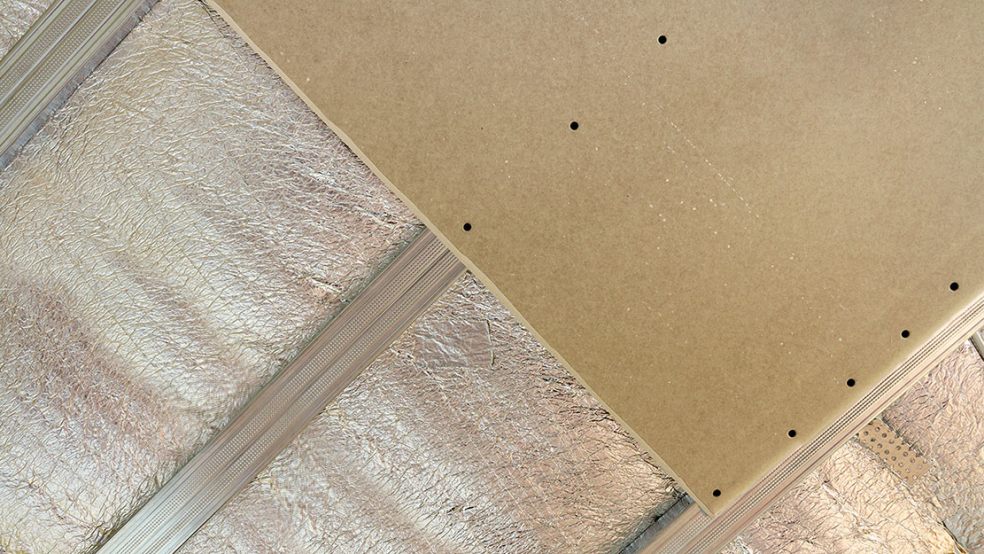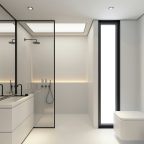
The Ultimate Guide To Insulated Plasterboard
How Insulated Plasterboard Works
Insulated plasterboard is essentially a dual-purpose building material that integrates insulation into a standard plasterboard. It’s designed to provide both structural support and thermal insulation in one easy-to-install package. Here’s how it works:
The Composition of Insulated Plasterboard
Insulated plasterboard consists of two main components:
- Plasterboard Layer: This is the standard gypsum-based board that forms the visible surface. It provides a smooth, paintable finish for walls and ceilings and serves as a sturdy, structural element in construction.
- Insulation Layer: Attached to the back of the plasterboard is a layer of insulation material, usually made from expanded polystyrene (EPS), extruded polystyrene (XPS), polyurethane (PU), or mineral wool. This layer is responsible for the thermal performance of the board.
How It Insulates
The insulation layer works by reducing the transfer of heat through walls and ceilings. It does this by trapping air within its structure, which significantly slows down the conduction of heat. This means that in winter, less heat escapes from inside the building, keeping the interior warmer. Conversely, in summer, the insulation helps to keep the interior cooler by preventing external heat from entering.
The thickness and type of insulation material used in the plasterboard determine its effectiveness, measured by its R-value. A higher R-value indicates better insulating properties.
Application and Installation
Insulated plasterboard is installed just like regular plasterboard. It’s typically fixed to walls or ceilings using adhesive, screws, or a combination of both. The installation process is straightforward, but the added insulation layer offers enhanced thermal performance compared to standard plasterboard.
The Benefits of Insulated Plasterboard
Insulated plasterboard offers a range of benefits that make it an attractive option for both new builds and renovations. Here are some of the key advantages:
Improved Energy Efficiency
One of the most significant benefits of insulated plasterboard is its ability to improve the energy efficiency of a building. By reducing heat loss in winter and minimizing heat gain in summer, insulated plasterboard helps maintain a consistent indoor temperature. This, in turn, reduces the reliance on heating and cooling systems, leading to lower energy bills and a smaller carbon footprint.
Enhanced Thermal Comfort
Homes and buildings that use insulated plasterboard are generally more comfortable to live or work in. The consistent indoor temperatures mean fewer drafts, less cold spots, and a more stable environment. This is particularly beneficial in climates with extreme temperatures, where maintaining comfort can be challenging and expensive.
Space-Saving Design
Traditional insulation methods often involve adding bulky layers of insulation to walls, which can reduce the usable floor space in a building. Insulated plasterboard offers a space-saving solution by combining insulation with the wall structure itself. This is especially advantageous in smaller homes or buildings where every inch of space counts.
Easier and Faster Installation
Because it combines insulation and plasterboard in one product, insulated plasterboard simplifies the construction process. There’s no need to install separate layers of insulation and plasterboard, which can save time and labor costs. This makes it an attractive option for both DIY enthusiasts and professional builders looking to streamline their projects.
Sound Insulation
In addition to thermal insulation, many types of insulated plasterboard also offer soundproofing benefits. The insulation layer helps to absorb and reduce noise transmission between rooms or from outside, contributing to a quieter, more peaceful indoor environment.
Versatility in Applications
Insulated plasterboard can be used in a variety of applications, including walls, ceilings, and even floors. It’s suitable for both residential and commercial buildings and can be installed in new constructions or retrofitted in older homes. Its versatility makes it a practical choice for a wide range of projects.
Compliance with Building Regulations
In many regions, building regulations require a certain level of thermal performance in new constructions and renovations. Insulated plasterboard can help meet or exceed these requirements, ensuring that your project is up to code and reducing the need for additional insulation layers.
Why Choose Insulated Plasterboard?
Insulated plasterboard is a smart choice for anyone looking to improve the energy efficiency, comfort, and sustainability of their building. By combining the structural support of plasterboard with the thermal performance of insulation, it offers a range of benefits that can enhance both new builds and renovations. Whether you’re looking to save on energy bills, create a more comfortable living environment, or comply with building regulations, insulated plasterboard is a practical and effective solution.













